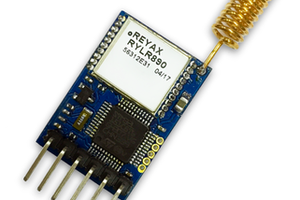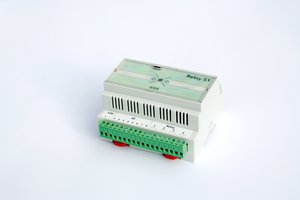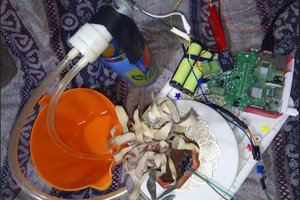This module with small size and high cost-effective is easy to use.In this article, we will use the digital storage oscilloscope to show you how the output voltage change with the immersion depth.What's more,we will show you an interesting actual application case.You will have a clear idea of how this module to realize the function of water level alarm.
This module is designed mainly for the DIY hobbyist and provide them a low-cost and easy-to-use water level detection scheme.The stability and durability of this module can not reach the industrial standard.But we use the high-quality PCB board to improve its stability and durability.If you just want to DIY for fun, this module will be a good choice.
Features: Simple ,Easy to use,Small size,Light, High Cost-Effective
Applicable Occasion:Water level alarm design
Parameter:
Working Voltage: DC5V
Working current: Less than 35mA
Type : Analog sensor
Testing area: 40mm x 18mm
Working temperature: 10℃-30℃
Working moisture: 10%-90% without condensation
Fixing hole size: Φ3mm
Product size: 60mm x 22mm
Step 1: Diagram
Step 2: Function Introduction
Step 3: Functional Test
Testing environment:barreled pure water
Testing procedures:
1.Connect the module to 5V power supply
2.Put the module to into the pure water
3.Observe the relation between the immersion depth and the output voltage of AO end.
Step 4: Actual testing results:①Totally out
Output Voltage: 0V
Output Current:0mA
Step 5: ②Immerse part of the module
Output Voltage: 3.22V
Output Current: 28mA
Step 6: ③Immerse full part of the module
utput Voltage: 3.42V
Output Current: 32mA
According to the three groups of data, we can make a conclusion that the actual testing results meet the requirement of application.
Step 7: Actual application case
Use this water level sensor module to control on or off about the LED which is on the arduino board.
Tools:
1.arduino uno
2.Pin Header
3.Dupont Cable
Step 8:
The simple introduction of the Funduino Atmega328P-PU which you need in this test :
This control board based on Atmega328, 14 digital I/O pins and 6 analog input pins , 16 MHZ crystal , USB interface, power socket and ICSP connectors. It contains all necessary components, microprocessor with USB cable can be inserted into the computer started to use.
1. Microcontroller core: AVRmega328P-PU (processing speed can be up to 20 MIPS)
2. Working voltage: + 5 v
3. The external input voltage: +7v~+12v (recommended)
4. The external input voltage (extreme) : + 6v or less Vin +20 v or less
5. Digital signal I/O interface: 14 (6 PWM output interface)
6. Analog signal input interface: 6
7. The DC current I/O interface: 40 mA
7. The Flash capacity: 32 KB (the other 2k for bootloader)
8. SRAM static storage capacity: 1 KB
9. EEPROM memory capacity: 512 bytes
10. Clock frequency: 16 MHZ
 icstation
icstation








 strange.rand
strange.rand
 NathanStrachen
NathanStrachen
 Aula Jazmati
Aula Jazmati